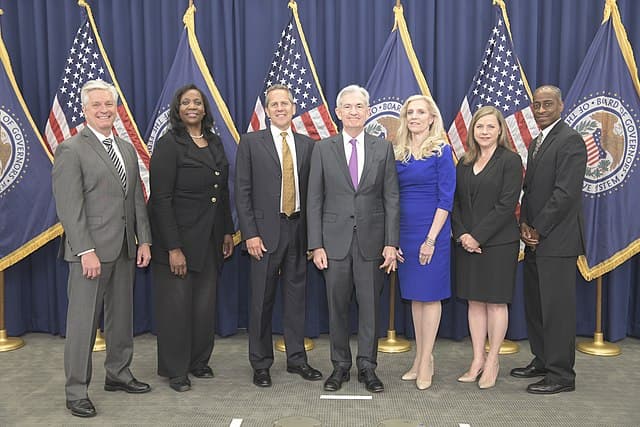The Fed Debates Moving the Goal Posts of Inflation
The central bank is weighing whether to raise its inflation target to 3 percent from 2 percent — a staggering 50 percent jump.

The news today that wholesale price inflation could be slowing — even as prices are rising at the fastest pace in four decades — will likely fuel the debate within the Federal Reserve over whether to move the goal posts in its anti-inflation fight. That debate, just chronicled in the Times magazine, pivots on whether to raise the central bank’s inflation target to 3 percent from 2 percent — a staggering 50 percent jump and a setback in the war on inflation.
Count us among those who view even a 2 percent rate of inflation as a kind of theft and a symptom of the age of fiat currency. We favor the rigor of the gold standard, which, in its heyday between 1879 and 1913, held American inflation to an average of 0.1 percent a year, economist Michael Bordo reminds. Settling for 2 percent inflation is bad enough — 3 percent could be described only as a flinch or backsliding.
Feature the Fed economists who operate what James Grant calls the PhD standard. There is “renewed discussion” among them, the Times reports, as to “whether the Fed should even be aiming for 2 percent inflation” — its “official target since 2012” — because of the potential turmoil. They fear “mass layoffs and a recession,” the Times says, and fret that the goal “constrains the Fed’s ability to pull the economy out of downturns.”
Economists “fear that the cost of driving inflation” down to 2 percent “could be punishing,” the Times reports. A Harvard economist, Jason Furman, warns it “could be very hard.” The Grey Lady’s own economic sage, Paul Krugman, calls 2 percent “a largely arbitrary target,” one that “we wouldn’t have chosen 20 years ago if we’d known then what we know now.” He suggests “declaring victory with inflation fairly low but not quite that low.”
An ex-economist at the Fed, Claudia Sahm, says her former employer has “callous disregard for the economic welfare of millions of Americans.” Kudos to the ex-Fed chief, Ben Bernanke, for noting that even if there is merit to a 3 percent inflation aim, “it can’t be done now because of the damage it would do to the Fed’s credibility.” The newly minted Nobelist says “You can’t move the goal posts when you are behind in the game.”
Even so, the Times reports, a former chief economist at the IMF, Olivier Blanchard, “suspects the Fed may end up deciding that 3 percent or thereabouts is close enough.” It would “give the Fed more flexibility,” Mr. Blanchard contends, and “the difference between 2 percent inflation and 3 percent is negligible,” never mind that it’s a, again, 50 percent increase. If inflation continues to slow, he says, the Fed will be pressed to “stand down.”
Absent from the babble is any sense of responsibility on the Fed’s part for inducing the current inflationary spiral in the first place. After all, it was the Fed’s monetary experiments, including racking up $9 trillion in assets under the guise of Quantitative Easing and maintaining artificially low interest rates, that laid the groundwork for today’s soaring prices. Reckless federal spending then triggered the avalanche out of which we are trying to dig.
It all serves to underscore the original error of handing to the Fed the monetary powers granted in the Constitution to Congress. The central bank was given what economist Judy Shelton calls “breathtaking powers to determine financial conditions.” It gave the Fed an, as it were, inflated idea of its ability to manage the economy in line with the vision of John Maynard Keynes, who derided the gold standard as a “barbarous relic.”
Yet a specie standard — gold or silver — was able to achieve stability in prices — an average of 0.2 percent annual inflation prior to the Fed’s creation, economists William Luther and Alexander Salter note. America’s experiment with a fiat dollar yielded an average inflation rate of 4 percent between 1972 and 2019 — double the 2 percent target. It’s now running at 6 percent. Moving the goal posts of the Fed is the last thing America needs.

